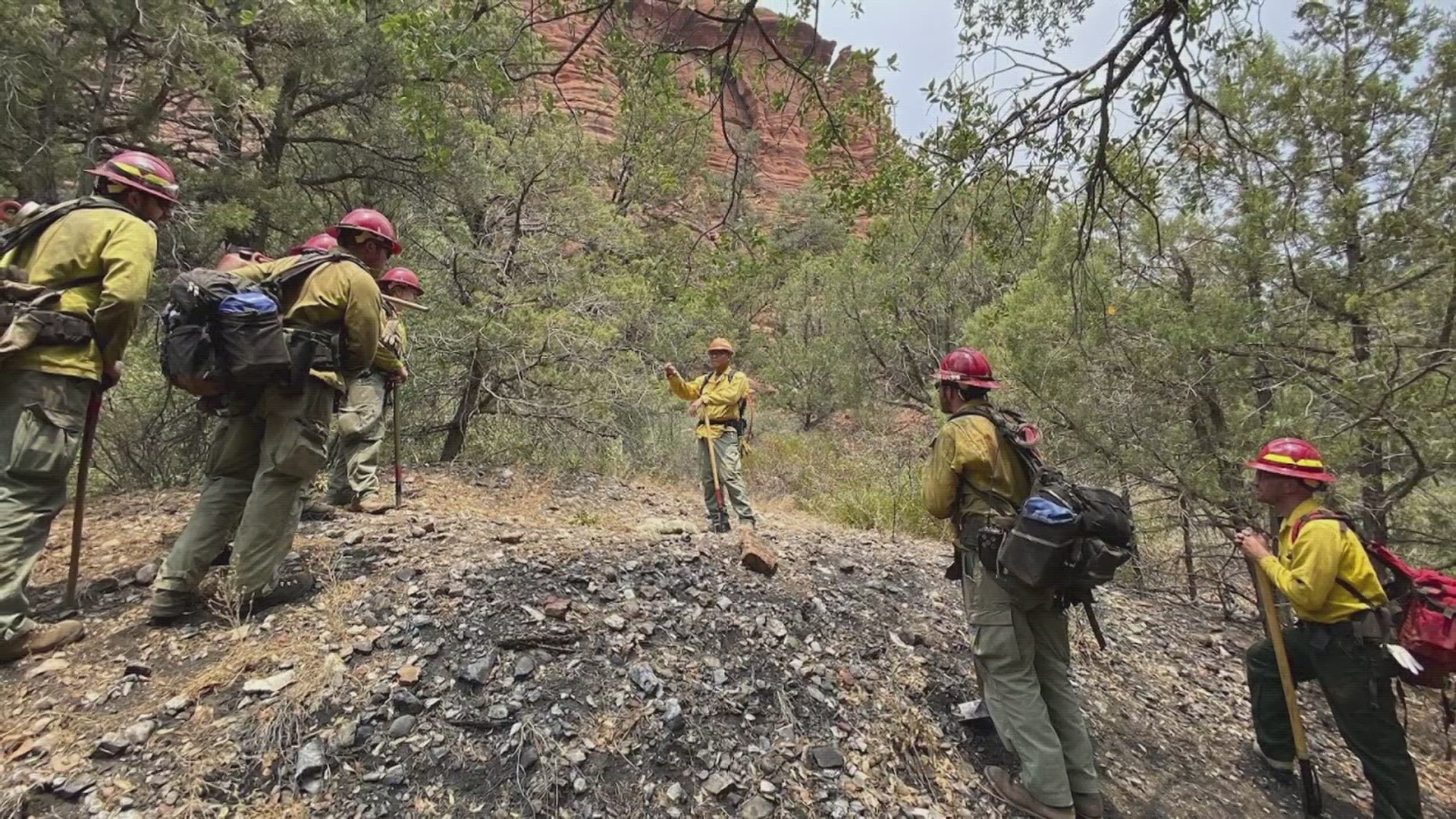FLAGSTAFF, Ariz. — Northern Arizona University researchers are building a tree-tracking computer app intended to give forest managers and even homeowners real-time data on the health of individual trees.
The project will use satellites and tools on the International Space Station to monitor the coloration, reflectiveness, and electromagnetic waves of leaves and pine needles invisible to the naked eye.
“By understanding the relationship between the color of the leaves and the health of the trees we can really understand the health of trees across the entire planet,” said Alexander Shenkin, the project’s lead researcher at NAU’s School of Informatics, Computing, and Cyber Systems.
Really? Every single large tree in Arizona?
It seems unfathomable that people would have the capability to track the stress levels of every large tree in Arizona. But Shenkin said powerful satellite cameras have the capability to capture useful details of trees between 9-18 feet in diameter and larger.
The Arizona Tree Stress Explorer and Alert System is in its first of three years of development. The Arizona Board of Regents in conjunction with state forestry leaders approved a $1.2 million grant for the research.
Satellites take photos daily of the Earth’s surface that can identify trees roughly 9-18 feet in diameter and larger. In 2020, NASA announced it used supercomputers and AI to count trees worldwide from space for the first time.
“The eventual goal is to have pretty much a tree-by-tree record of the health of all the trees across Arizona, starting about in 2018 and going forward (to present day). We would make that available to the public via a website and an app,” Shenkin said.
Project will monitor drought and bark beetles
The tool will help state wildfire experts identify zones vulnerable to wildfire.
“That could indicate an area they want to keep a closer eye on. Perhaps to thin the area if it tends to get too stressed,” Shenkin said. “And for bark beetles, if we detect it early enough we can treat around an area to prevent the spread of bark beetles.”
Property owners may also have a personalized app that provides daily updates on stress levels of their large trees and shrubs.
“You have a tree in your front yard or back yard and you want to track how it’s doing across time. Maybe the summer is dry and you’re worried about the health of the tree. You can keep track of it via this app,” Shenkin said.
Healthier forests mean a healthier planet
The broader goal is related to the survival of our species. Human-caused climate change is primarily caused by fossil fuels that pump CO2 and other toxins into the atmosphere. Warmer temperatures add stress to forests, prompting a secondary threat to climate change.
“Forests hold carbon in the ground, in the trunks of the trees. When they die, they release carbon into the atmosphere and contribute to the warming of our planet,” Shenkin said.
Researchers hope detailed data that illustrates how trees are being impacted by climate change will motivate civilization to act sooner to reduce CO2 emissions.
Up to Speed
Catch up on the latest news and stories on the 12News YouTube channel. Subscribe today.

